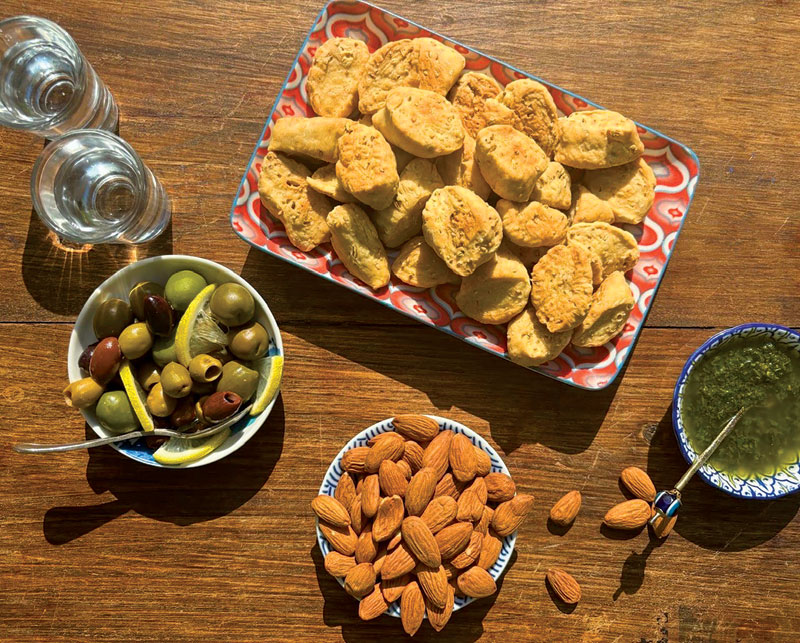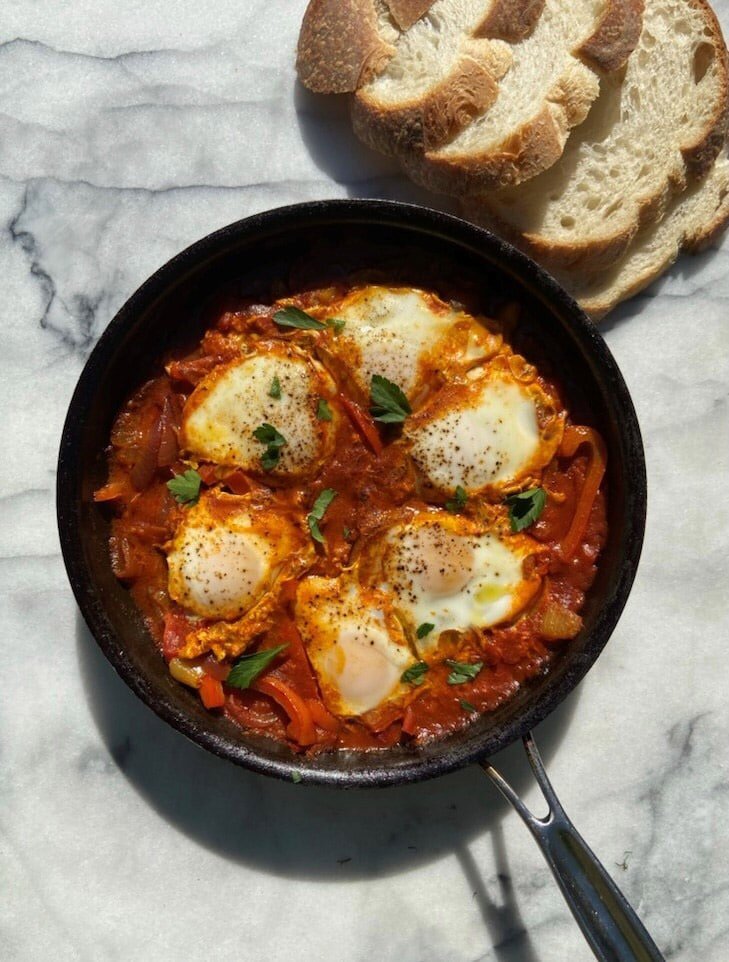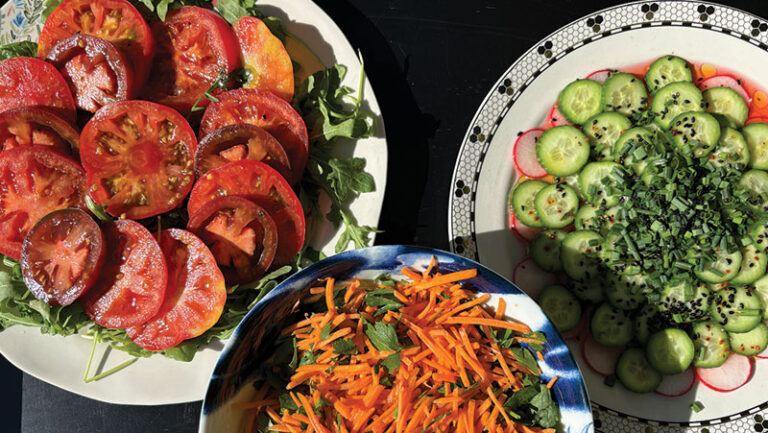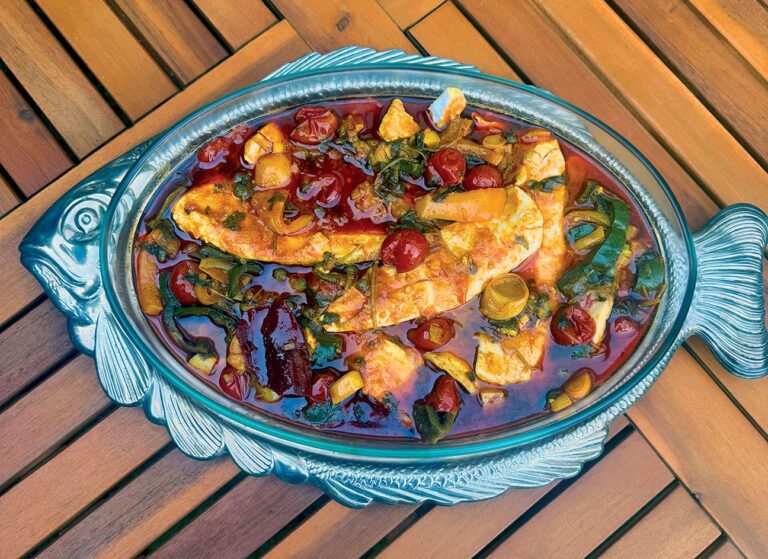Tunisian Twist– Crispy Ka’ak
Ka’ak is a primal memory for me.

Ka’ak is a primal memory for me. My grandmother Nana Aziza always, always had a supply of crispy, salty ka’ak in her home. And she always served it as an afternoon treat with a glass of her cardamom infused black tea.
As a little girl, I loved sitting in her Rose Bay kitchen, watching her bake trays and trays of these ring crackers. She would be surrounded by tubs of dough and bowls filled with sesame seeds and black nigella seeds, with her plump well-worn hands expertly kneading, rolling, sprinkling, while her gold bangles made magical tinkling sounds.
Ka’ak originated with the ancient Babylonians and Assyrians and was later adopted by the Arab world. Ka’ak literally means “cake” in classical Arabic and is the common word for cookie, especially crown-shaped cookies. But ka’ak is also used to refer to several types of baked goods that are popular in the Middle East, including the sesame crusted Jerusalem bagel, ka’ak bel simsim.
Ka’ak literally means “cake” in classical Arabic and is the common word for cookie, especially crown-shaped cookies.
My grandmother, who was born and raised in El Azair in Southern Iraq, made a delicious, classic ka’ak. It was flaky and crispy and perfectly satisfying, with its lingering notes of sesame and aromatic nigella seeds. While she left her ancestral home behind, she carried with her the warmth of Middle Eastern hospitality and the pleasure of a lovingly prepared homemade treat.
—Sharon
We North Africans take “aperitif” very seriously. This cocktail hour ritual is not so much about what you are drinking, which is usually a licorice-flavored arak or a fine whiskey. It’s all about the small bites. Lots of crispy ka’ak, lots of roasted and salted almonds, pistachios and cashews and a colorful variety of briny olives. Sometimes the repast will expand into “kemia” which literally translates to small dishes and is usually a selection of dips and salads. Growing up in a Moroccan household, we always referred to appetizers as kemia. Kemia was always a fun ritual, even if it was just cheese, crackers and olives. I have the best memories of sitting around the table with uncles and aunts, sipping drinks and feasting on all kinds of baked crackers and other home-made goodies.
The last time we baked the traditional salty Syrian ka’ak rings was in February. We made them at our friend Esther’s house in honor of the wedding of her daughter, Miriam. (Ka’ak are always traditional for celebrations and Jewish holidays.) We baked 300 perfect miniature ka’ak and we transported them to Baltimore in a securely packed piece of carry-on luggage.
After the Shabbat Chattan services on Saturday morning, everyone gathered for “aperitif.” The whiskey flowed and there were trays of sweet cookies and fresh fruit. But it was the ka’ak that disappeared within minutes.
This week Sharon and I present you with the recipe for the Tunisian version of ka’ak. The crispy, yeasty dough is flavored with nutty sesame seeds and fennel seeds. The technique is much, much easier than the traditional method of forming small, perfectly uniform rings. This recipe calls for rolling the dough into a one-inch rope and then cutting the dough into little nuggets. So easy and quick. Before you know it, you’ll be popping one of these delicious rustic bites into your mouth.
—Rachel
Kakis Tunisien
4 cups unbleached all-purpose flour
1 tbsp sea salt
1/2 cup avocado or vegetable oil
1 sachet of active dry yeast
1 cup water
2 tbsp sesame seeds
2 tbsp fennel seeds
Preheat oven to 350°F
Sift the flour into a large bowl, then make a well in the middle of the flour.
Add the salt, oil, yeast, water, sesame seeds and fennel seeds and knead to form a dough. If the dough feels too dry, add a tablespoon of water at a time and continue kneading until the dough comes together and feels smooth, not sticky.
Take a handful of the dough and roll into a thin log. Use kitchen shears to cut the dough into one-inch-wide nuggets. Continue with the rest of the dough.
Place the ka’ak nuggets on a parchment lined tray and bake for 15 minutes or until golden brown.
For extra crunchy ka’ak, allow to cool, then bake in an oven set to 200°F for an additional hour.
Store in a tightly sealed container.
Sharon Gomperts and Rachel Emquies Sheff have been friends since high school. The Sephardic Spice Girls project has grown from their collaboration on events for the Sephardic Educational Center in Jerusalem. Follow them
on Instagram @sephardicspicegirls and on Facebook at Sephardic Spice SEC Food.







